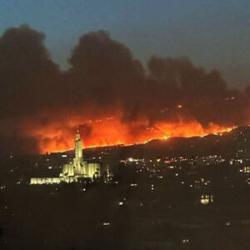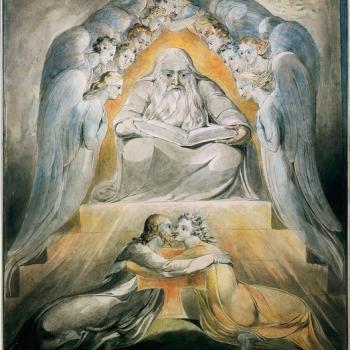It is clear that John the Immerser continued to have disciples and followers in the decades after his death (Jn. 4:1). Apollos, for example, apparently accepted Jesus as the Messiah, but followed John's form of baptism rather than Jesus' (Acts 18:24-19:7). The (Pseudo)-Clementine Recognitions, probably written in first quarter of the 3rd century, almost two centuries after the death of John the Immerser, describe a still active community of John's disciples, sometimes in opposition to Christians. These disciples claimed that John the Immerser was the Messiah, was greater than Jesus, and that he had been hidden away by God (Clementine Recognitions, 1.54.8, 1.60.1-2; cf. Mk 6:14), presumably for an eschatological return. Thus the Beloved's concern in chapter one emphasizing that John the Immerser expressly said that he was not the Messiah (1:20), and that Jesus was the Messiah (1:26-34), is perhaps in response to these types of claims by the Immerser's disciples.
Crying out in the Wilderness
In response to the questions of the temple priests, John describes himself as "the one crying out in the wilderness: ‘Make straight the way of the Lord!'" (Jn. 1:23). John is quoting the famous prophesy of Isaiah 40:3, which is part of the chapter proclaiming comfort to Jerusalem. In the first-century, citation of one verse from the Hebrew Bible was often a shorthand reference to an entire passage. (At the time of Jesus, the Hebrew Bible was not yet divided into standardized chapters and verses, as can be seen from biblical texts in the Dead Sea Scrolls.) Thus, what John is actually saying is "I am the person crying in the wilderness prophesied in Isaiah 40." By citing one verse from Isaiah, John is expecting his readers to be familiar with this passage and make additional connections with the entire passage, not just the single verse explicitly mentioned. When we read all of Isaiah 40 in this light, we see a number of messianic motifs that are important in John. If we look at Isaiah with a messianic perspective in mind, we see the following motifs: God's prophet is speaking comfort (40:1), iniquity is pardoned (40:2), the glory of YHWH is revealed (40:5, a title for Jesus in John), a herald proclaiming the "good news" that Jerusalem will "behold your God" (40:9), a good shepherd motif (40:11), and the coming of the "Spirit of YHWH" upon one who will teach knowledge, justice, and understanding (40:13-14). As we shall see, these are all important themes for John.
Thus John the Immerser is the first man to recognized Jesus as the Messiah, and the Beloved's account of this encounter introduces major themes that will be fully developed throughout the gospel.
A pdf of the full version of this column, with extensive references and notes, can be found here.
Updates and discussion can be followed on Facebook.





